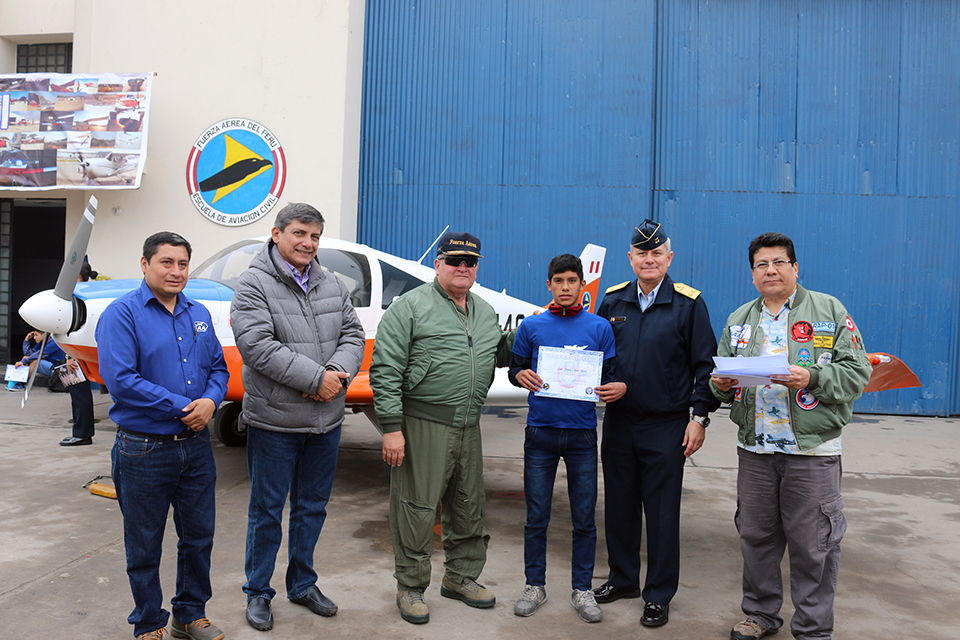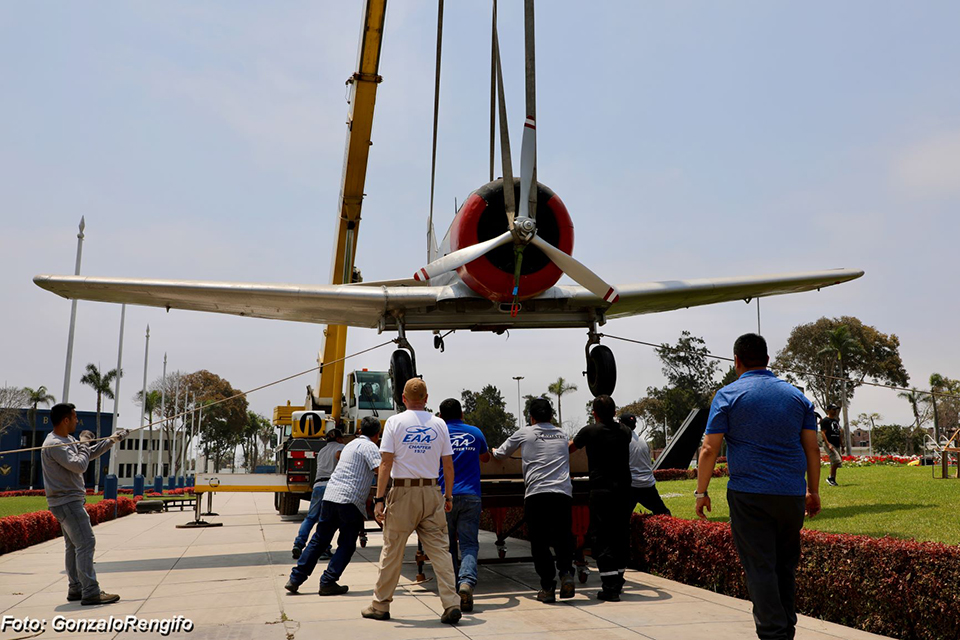EAA Chapter 1572 — Capitalizing on a Nation’s Aviation Opportunity
October 2019 - You may know, or at least have heard, about Peru in connection with good food, one of the Seven Wonders of the World Machu Picchu, or the Nazca lines. But what you may not know if you haven't visited the country for yourself is that this is a country with vast amounts of untapped potential. That's a fact. Peru is truly a land of opportunities.
In a country of 33 million people and with a very challenging geography — mostly arid desert with little rain on the coast, the high and steep terrain of the Andes mountains crossing it, and the Amazon rainforest — there are approximately 150 registered general aviation aircraft in the entire country. To put things into perspective, Peru's neighboring countries, like Ecuador and Bolivia, have between 3,000 and 5,000 registered GA aircraft. Its other neighbors — Colombia, Brazil, and Chile — greatly surpass this number. To bring this situation closer to home, you can imagine what would happen to the development of Alaska if it only had 150 registered airplanes, instead of the 9,346 the FAA reported in 2016.
To understand how this is possible, you should know that the situation in Peru wasn't always like this. In fact, until the 1970s Peru was one of the regional leaders in aviation and has a proud heritage in this field that has been completely forgotten by the generations that came afterward. Examples of Peruvian contributions to aviation include people like Pedro Paulet, an engineer considered to be the pioneer of modern-day rocketry by Wernher von Braun, who produced designs around 1900 that would become reality 30 years later; Jorge Chávez, who in 1910 crossed the Alps by air for the first time in his Bleriot XI; and José Quiñones, a gifted military pilot who sacrificed his life to secure victory in battle.
Some of Peru's aviation highlights were the fabrication of Caproni aircraft up until the beginning of World War II, the initiation of the aeronautical industry in South America by the "Compañia de Aviación Faucett S.A.," founded by Elmer Faucett, an American immigrant who arrived in Peru in 1922. The company built Stinson airplanes in Peru and was one of the first and most successful commercial aviation companies in South America. Through aviation, many places that were considered remote had built airports to reap the benefits of the possibilities that aviation presented. There were aeroclubs in the entire territory, and Peru was the undisputed aviation pioneer among its neighbors. Those were the golden days of aviation in this proud South American country.
Nevertheless, political and socio-economic reasons were responsible for progressively weakening Peru's leadership in aviation. The two main contributors to the country's current situation were the communist military government of Juan Velasco Alvarado and the rise of communist terrorism, led by the Shining Path terrorist group. During Velasco's regime, the goal was to nationalize every industry and expropriate companies in every major activity, like fishing, mining, telecommunications, and power production. The class warfare propaganda that Velasco's government engaged in also included aviation, which was portrayed not as a development tool for the country, but as an exclusive luxury of the rich. From 1970 on, Peru's aviation started to progressively decay, and with the rise of Marxist terrorism in 1980 and the political and socio-economic instability it brought, the process was expedited. The result of all of this is that 150 GA aircraft are officially registered, from which fewer than 100 are operational. Trips to deliver medicines from point A to point B are done in a small boat through a river in the rainforest that takes three days to complete, while the same trip could be done with a STOL aircraft in one hour.
But all of this is history. And where some see something to mourn, others see opportunity. This situation has created a group of intensely thirsty young people with a passion for aviation, and despite the circumstances they are determined to be active in this field. It has also created a very large potential market for aviation executives.
In 2015, EAA Chapter 1572, based in Lima, Peru, was founded with a single objective in mind: to replicate EAA's model in its country, according to its specific conditions and challenges. Chapter 1572 seeks to be the spark of change, following the legacy of Paul Poberezny, and to make aviation available to every Peruvian who has a passion for it, regardless of their backgrounds. It promotes aviation as a recreational activity, but also as a tool for the development of the country. Its Young Eagles program usually focuses on underprivileged kids who have never experienced aviation in any form. Through its other programs, the chapter is forming alliances with institutions and promoting aviation in the student community at all levels. It has always portrayed aviation as a lifestyle, open to anyone who once dreamed of becoming a pilot, mechanic, or engineer, regardless of their chosen profession. Not surprisingly, a lot of lawyers, executives, communicators, doctors, and others come in contact with the chapter and tell the same story: "Yes, I studied _____, but I always wanted to be a pilot, and I didn't know what to do or where to begin."
Perhaps one of the most ambitious projects of Chapter 1572 is the restoration of the last remaining North American NA-50 in the world to flying condition for the celebrations of Peru's Bicentennial of Independence in 2021. The NA-50 is a legendary aircraft in Peru. In 1939, Peru purchased seven NA-50s from North American Aviation in Inglewood, California. The aircraft was nicknamed "Torito" (Spanish for "Little Bull") by the Peruvian pilots, because of its small size but powerful performance. Peru's NA-50 squadron actively participated in the Ecuadorian-Peruvian War in 1941. It is during this war that José Quiñones, a young military aviator, sacrificed his life by directing his injured NA-50 right into the Ecuadorian antiaircraft artillery to secure victory in battle and save the lives of his fellow pilots. Because of this action, Quiñones was declared a hero and the NA-50 became a symbol of duty, honor, and heroism.
You can visit Chapter 1572 and see everything its members are doing there for yourself. You can even help them with the NA-50, go fly with them, and visit Peru's other touristic attractions, like Machu Picchu or the Nazca lines. As a part of the EAA family, they will be very happy to assist you with that. If you are not just an aviation enthusiast, but also an aviation executive, pay close attention to Peru's situation and potential. There are still some barriers that Chapter 1572 is working on overcoming so that Peru's need for aviation becomes a fertile market. However, remember the numbers, 150 versus at least 3,000 registered aircraft. That's the definition of opportunity.


